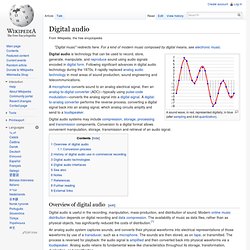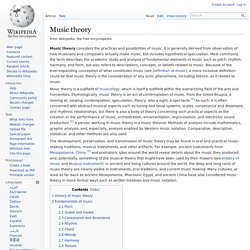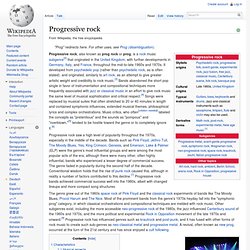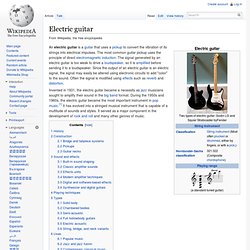

Digital audio. Digital audio is technology that can be used to record, store, generate, manipulate, and reproduce sound using audio signals encoded in digital form.

Following significant advances in digital audio technology during the 1970s, it rapidly replaced analog audio technology in most areas of sound production, sound engineering and telecommunications. A microphone converts sound to an analog electrical signal, then an analog-to-digital converter (ADC)—typically using pulse-code modulation—converts the analog signal into a digital signal. A digital-to-analog converter performs the reverse process, converting a digital signal back into an analog signal, which analog circuits amplify and send to a loudspeaker. Roger Linn Design - Designers of Innovative Products for the Electronic Music Instrument Industry. Recording Techniques. Create Digital Music. Music theory. Music theory considers the practices and possibilities of music.

It is generally derived from observation of how musicians and composers actually make music, but includes hypothetical speculation. Most commonly, the term describes the academic study and analysis of fundamental elements of music such as pitch, rhythm, harmony, and form, but also refers to descriptions, concepts, or beliefs related to music. Because of the ever-expanding conception of what constitutes music (see Definition of music), a more inclusive definition could be that music theory is the consideration of any sonic phenomena, including silence, as it relates to music. Music theory is a subfield of musicology, which is itself a subfield within the overarching field of the arts and humanities. Connecting Linear Harmony. Dmitri Tymoczko, Composer and Music Theorist. Progressive rock. Progressive rock, also known as prog rock or prog, is a rock music subgenre that originated in the United Kingdom, with further developments in Germany, Italy, and France, throughout the mid-to-late 1960s and 1970s.

It developed from psychedelic pop (rather than psychedelic rock, as is often stated). and originated, similarly to art rock, as an attempt to give greater artistic weight and credibility to rock music. Bands abandoned the short pop single in favor of instrumentation and compositional techniques more frequently associated with jazz or classical music in an effort to give rock music the same level of musical sophistication and critical respect.[4] Songs were replaced by musical suites that often stretched to 20 or 40 minutes in length and contained symphonic influences, extended musical themes, philosophical lyrics and complex orchestrations.
Characteristics[edit] Musical aspects[edit] Form[edit] Instrumentation[edit] SampleWiz - a next-generation sampler for the iPad, iPhone, and iPod touch! Rush. Peter Gabriel. Bass guitar. Kubicki.com / Home. TalkBass.com - Bass Guitar and Double Bass Forums: Basses, Amps, Strings, Effects. No treble : the site for bass players. Tony Levin's Road Diary. Esperanza Spalding! Stanley Clarke-StanleyClarke.com. B R I A N B R O M B E R G. Larry Graham Official Website - Home. Marcusmiller.com. Victor Wooten. Flecktones // Home. Sting.com - Official Site and Official Fan Club for Sting - Home. Electric guitar. Invented in 1931, the electric guitar became a necessity as jazz musicians sought to amplify their sound in the big band format.

During the 1950s and 1960s, the electric guitar became the most important instrument in pop music.[1] It has evolved into a stringed musical instrument that is capable of a multitude of sounds and styles. It served as a major component in the development of rock and roll and many other genres of music. History[edit] The "Frying Pan", 1932 The need for the amplified guitar became apparent during the big band era as orchestras increased in size, particularly when guitars had to compete with large brass sections. Gibson Les Paul Custom 1954 The first solid body "Spanish" standard guitar was offered by Vivi-Tone no later than 1934.
Gibson's first production electric guitar, marketed in 1936, was the ES-150 model ("ES" for "Electric Spanish"; and "150" reflecting the $150 price of the instrument, along with matching amplifier). Vai.com - The Official Steve Vai Website. Www.stick.com - Stick Enterprises Inc. Chapman Stick player Greg Howard's Web Site. Steve Adelson - Guitar Instructor.